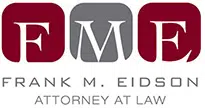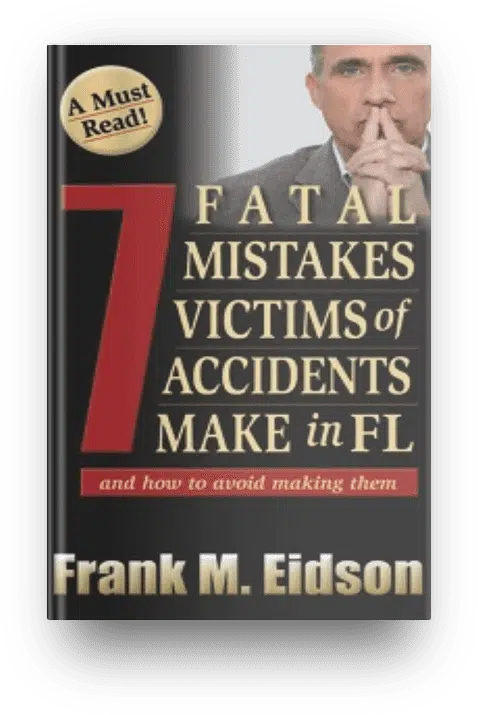Accident Reconstruction
Accident reconstruction is a science. It involves analyzing a wide range of evidence. The goal is to determine how a crash occurred and who was at fault. The accident reconstruction is presented to an insurance company at settlement negotiations or to a jury at trial. Photos, videos, exhibits or computer animation are often used to illustrate what happened.
Attorney Frank M. Eidson takes a hands-on role when it comes to investigating car, truck and motorcycle accidents for his clients. He works closely with highly qualified Orlando accident reconstruction investigators and experts throughout the process. This is because he understands the important role that accident reconstruction plays in obtaining just compensation.
To learn more or to discuss your auto accident, please contact Frank M. Eidson, P.A., today by phone or online. We provide free consultations to accident victims and their families in Orlando, Winter Park and throughout Florida.
Accident Reconstruction Is a Search for Answers
Accident reconstruction is like putting together a puzzle. It requires taking pieces of information from the three basic phases of a crash – before impact, impact and after impact – and assembling them into a clear and accurate picture.
The ultimate goal is to answer questions such as
- When did those involved in the crash first realize there was danger (or when should they have first realized it)?
- Did anything obstruct the drivers’ views such as a sign, foliage or a bend, dip or curve in the road?
- Was any driver distracted before the crash – for instance, by talking on a cell phone, texting or fiddling with a GPS device or the radio?
- Did anyone take steps to avoid the crash by braking or swerving?
- How fast were the vehicles traveling at the time of impact?
- Where was the point of impact – side, head-on, rear-end?
- How severe was the impact?
- Where did the vehicles (or individuals) come to their final resting position?
- Was there a defect in the road?
- Did a part on one of the automobiles fail to operate as it should have?
While a police report may contain much of this information, it is important to independently investigate the facts in the report and to critically assess it. By no means should the police report be viewed as the “final word” on a crash.
Evidence Used in Accident Reconstruction
It is crucial to begin an auto accident investigation as soon as possible after a crash. Evidence must be obtained and preserved as soon as possible in order to ensure that it is not lost or destroyed. The goal is to give an accident reconstruction expert as much information as possible. This evidence includes:
- Photos and video – In a perfect world, photos and video are available of the crash scene before the vehicles are removed and debris is cleaned. However, even after the cleanup, important evidence remains that can be documented, including the drivers’ views as they approached the crash and the presence of skid marks and traffic controls. Photos and video may also show defects in the road such as a pothole or deteriorating shoulder. Some experts use aerial photos to get a “bird’s eye view” of the crash scene.
- Vehicles – An expert will inspect the interior and exterior of all vehicles involved in the crash and document the inspection with photos and/or video. The expert will look at the damage to determine the point of impact and the severity of the crash. An engineer may also be called upon to examine the vehicle for defective parts that may have contributed to the crash – especially if the vehicle has been subject to a recall.
- Witness statements – What witnesses saw, heard or even smelled at the scene of the accident can be extremely helpful in piecing together what occurred. These statements often corroborate what physical evidence reveals. For instance, a witness may not have heard brakes squealing, which explains why there are no brake marks at the scene.
- Black boxes – Most cars today are equipped with event data recorders, which are commonly called “black boxes.” A wealth of data can be downloaded from a black box, including information about a vehicle’s speed and braking and whether air bags deployed.
- Cell phone records – These records can be obtained to find out whether a driver was talking on the phone, texting or viewing a Web page just before impact.
- Other evidence – Any other information that can explain a crash can be used in accident reconstruction, including toxicology test results that reveal the role of alcohol or drugs in causing the crash. In some cases, store receipts and toll booth records may indicate that the driver was on the road for a long time, pointing to fatigue as a factor.
Contact an Orlando Car Accident Attorney
Attorney Frank M. Eidson works with highly knowledgeable and experienced investigators, accident reconstruction specialists, engineers and other experts as he prepares auto accident cases for settlement or trial. Our firm also uses state-of-the-art technology to present accident reconstruction to insurance companies and juries. Our goal is to make sure our clients are fully and fairly compensated for their losses so they can move on with their lives.



 7 Fatal Mistakes Victims of Accidents Make In Florida
7 Fatal Mistakes Victims of Accidents Make In Florida